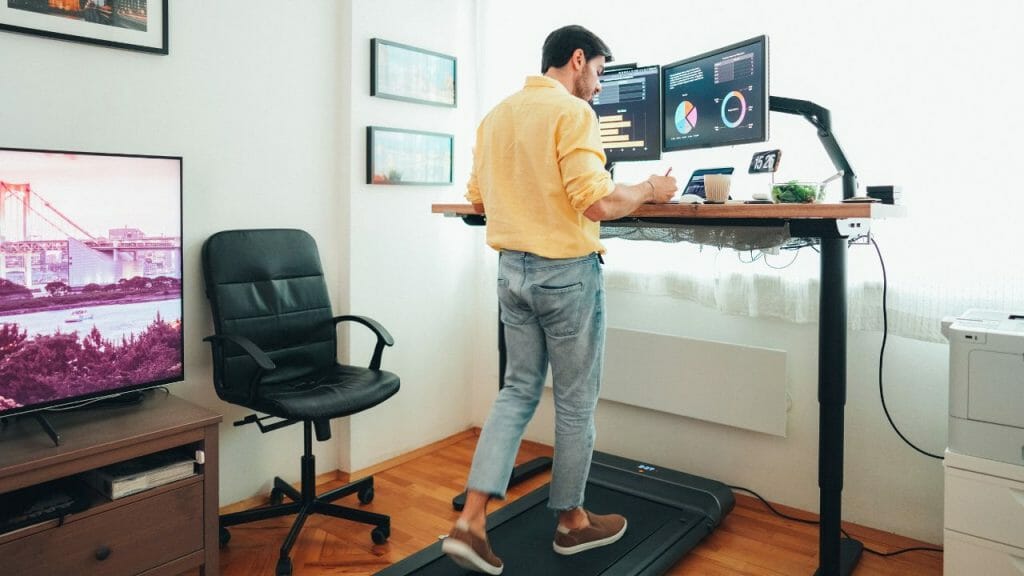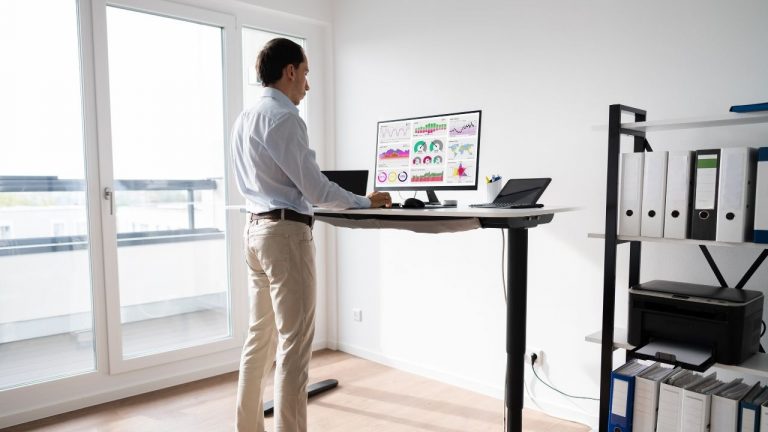Can You Plug Standing Desk Into Surge Protector?
It only takes one wrong move to ruin your hundreds of dollar investment in a top-quality standing desk. For example, many users prefer ordering a surge protector along with the desk. While others believe it’s not important.
But as a conscious user, you should research how a surge protector will impact your standing desk before choosing any team. So, what’s the truth? Can you plug the standing desk into a surge protector?
You can plug any standing desk into a surge protector. Its ultimate purpose is to prevent dangerous power surges from affecting the electric desk and other devices connected to it. Attach it underneath your desk for a cleaner look.
Surge protectors do come in different categories. And it is important to find one that suits your standing desk and outlet requirement. If you still have some doubts, keep on reading.
Is It Safe To Plug A Standing Desk Into Surge Protector?
Don’t worry. There is no safety hazard when it comes to connecting your standing desk to a surge protector. In fact, it is recommended by the manufacturers to avoid any critical damage. Even the affordable standing desks are not that cheap. So, you better take high consideration into whether the right amount of electricity is entering the desk’s motors or not.
Here’s what a surge protector typically does. It prevents any sudden voltage spikes from getting to the connected electronic equipment. Usually, 120V AC is the right voltage the electrical lines inside your office wall are supposed to provide. It is the optimum level for most electrical office components, including a standing desk.
But during a sudden lightning or any other electrical mishap, the number can go up to 169V (that’s a lot). Imagine what it would do to your precious standing desk and other machines connected to the wall socket.
The least damage you can expect is melted or fried wiring. In that sense, not plugging the desk into a surge protector sounds extremely dangerous and risky.

Why Use A Surge Protector At All?
Many people don’t entertain the idea of bringing an extra cable into their office space. Instead, they prefer using expensive power outlets that don’t usually cause power spikes. But the thing is, there is no particular reason why such power surges occur. Sometimes it’s due to lightning or an electrical damage. Needless to say, you are not safe even if the electrical line is well maintained.
If there’s no barrier between the main power outlet and your standing desk, the electrical parts are at high risk of damage. That’s why it is highly recommended to use a surge protector to act as an invisible wall. If the voltage exceeds the maximum level, the surge protector prevents electricity from running into the desk. Instead, it will direct the electricity to go into the ground, thus saving you from a nightmare.
What Are Some Dangers Of Using A Surge Protector
After what we said above, it seems like there’s no bad side to having a surge protector. That’s not true. Here are the two issues you will be having
1. Tripping Hazard
If you label yourself as messy, an extra cable inside the office wouldn’t be the best thing in the world. In fact, tripping incidents are very common within an office surrounding. Sometimes you are consumed by the work and walk in a rush to avoid the cable on the floor. If you are lucky, you will just hurt your leg a bit. And, in the worst-case scenario, there might be something hot (coffee, tea) or expensive (smartphone, iPad) in your hand.
2. Cluttered Office
We understand if you want to avoid further cluttering the office space. It’s even more significant for a home office. A nicer and cleaner office area is trending right now. It helps a lot if your job is stressful and requires a lot of mental focus. Having a lot of cables going around the desk might ruin that aesthetic for you.
Many people don’t mind cables. But it’s still a big No for a lot of professionals who would go the extra mile to follow the minimalist approach in their office.
3 Things To Consider While Choosing A Surge Protector For Standing Desk
Well-known brands like Uplift and Flexispot offer surge protectors designed for their standing desks. However, that’s not mandatory. You can pick any surge protector you find fit. Just make sure the outcome matches your desk’s power requirement. That being said, here are some other things to consider for the best results from your new surge protector.
1. Eight Outlets
Not every surge protector has the same number of outlets. If you only want to connect one piece of equipment (like the desk), there’s hardly any need for more outlets. Also, more outlets mean bigger sizes and more expensive.
But apart from these little issues, most workers need an eight-outlet surge suppressor. The more outlets, the more scope you have to protect the other important items in the room. Especially, if you work digitally, you most probably have a PC sitting on the desk. The computer or the printer is not less important. So, why not give these office essentials the same protection as well?

2. Mount Brackets
If you are not keen on showing the surge protector to everyone, you need some under-desk cable management system. Attaching it under the desk is the best way to hide that surge protector. And voila! It’s invisible.
But to attach it there, you need surge protectors that come with mounting brackets. So, make sure you look for that specific type.
3. Extra Space For Charging Port
Apart from the fixed outlets, some space should be left for further customization. You might want to mount some more charging ports for your mobile phone or laptop. It would be a hassle to attach another USB charging port. Not to mention, it only reduces your efficiency in cable management.
Before You Go!
It may be hard to find all three features in one surge protector. But make sure it at least offers two of them. At this point, it seems like a manual standing desk would have been better. You can consider it if you haven’t bought an electric desk already. Check out the major differences between a crank and an electric standing desk.


![How Long Do Electric Standing Desks Last? [Increase Lifespan]](https://homethereby.com/wp-content/uploads/2023/04/working-on-standing-desk-768x432.jpg)
![Exercise Ball VS Standing Desk [Pros & Cons Explained]](https://homethereby.com/wp-content/uploads/2023/05/Exercise-Ball-VS-Standing-Desk-768x432.jpg)


